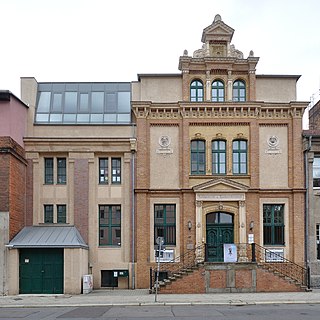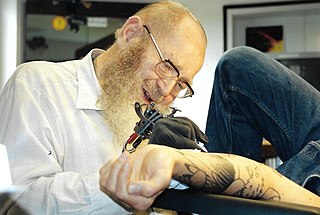
Dresden is the capital city of the German state of Saxony and its second most populous city after Leipzig. It is the 12th most populous city of Germany, the fourth largest by area, and the third most populous city in the area of former East Germany, after Berlin and Leipzig. Dresden's urban area comprises the towns of Freital, Pirna, Radebeul, Meissen, Coswig, Radeberg and Heidenau and has around 790,000 inhabitants. The Dresden metropolitan area has approximately 1.34 million inhabitants.
Central Germany is an economic and cultural region in Germany. Its exact borders depend on context, but it is often defined as being a region within the federal states of Saxony, Thuringia and Saxony-Anhalt, or a smaller part of this region, such as the metropolitan area of Leipzig and Halle plus the surrounding counties.

Staatliche Kunstsammlungen Dresden is a cultural institution in Dresden, Germany, owned by the State of Saxony. It is one of the most renowned and oldest museum institutions in the world, originating from the collections of the Saxon electors in the 16th century.

Matthias Leupold is a German photographer and professor who lives and works in Berlin. His father Harry Leupold was set designer at the D.E.F.A. studio for feature films in Potsdam.

Max Seydewitz was a German politician. Between 1947 and 1952 he was the Minister-President of Saxony in the German Democratic Republic.

A Kunstgewerbeschule was a type of vocational arts school that existed in German-speaking countries from the mid-19th century. The term Werkkunstschule was also used for these schools. From the 1920s and after World War II, most of them either merged into universities or closed, although some continued until the 1970s.

The Staatliches Museum Schwerin is an art gallery and museum in Schwerin in Germany. It was established by Frederick Francis II, Grand Duke of Mecklenburg-Schwerin in 1882 its historicist Haupthaus as the Staatsgalerie next to the Staatstheater. Its other locations are opposite the Schweriner Schloss and in the former residences at Schloss Güstrow and Schloss Ludwigslust.

Herbert Hoffmann was a German tattoo artist and photographer.

The Leipzig Museum of Ethnography is a large ethnographic museum in Leipzig, Germany, also known as the Grassi Museum of Ethnology. Today it is part of the Grassi Museum, an institution which also includes the Museum of Applied Arts and the Museum of Musical Instruments, based in a large building on the Johannisplatz.

The Klassik Stiftung Weimar is one of the largest and most significant cultural institutions in Germany. It owns more than 20 museums, palaces, historic houses and parks, as well as literary and art collections, a number of which are World Heritage Sites.

The Museum of Applied Arts is a museum in Leipzig, Germany. It is the second oldest museum of decorative arts in the country, founded just six years after the Kunstgewerbemuseum Berlin. Today it is part of the Grassi Museum, an institution which also includes the Museum of Ethnography and the Museum of Musical Instruments, based in a large building on the Johannisplatz.

Schloss Muskau is a schloss in the Görlitz district in the state of Saxony, Germany. It is located in an extended park, the Muskau Park, since July 2004 a UNESCO World Heritage Site. The building complex was developed over a long period. The present main building, called Neues Schloss, was built in the 19th century in Neo-Renaissance style, burnt down in 1945, and after decades as a ruin, was reconstructed until 2013.

Jay Gard is a German artist. He lives and works in Berlin.

Gerd-Helge Vogel is a German art historian.
Konrad Sasse was a German musicologist and Handel scholar.
Edwin Werner is a German musicologist and Handel scholar.

Helmut Heinze is a German sculptor. From 1979 to 1997 Heinze was professor for plastic arts at the Dresden Academy of Fine Arts.
Carl Heumann was a German art collector persecuted by the Nazis because of his Jewish origins.
Arnold Friedrich Victor Jacobi was a German zoologist and ethnologist who worked at the Forest Academy in Tharandt and later served as director of the Dresden Museum. He studied biogeography, described numerous taxa of molluscs, cicadas and wrote on birds and mammals. He was a supporter of the Nazi regime.














